If you’re thinking of returning to work and wondering how you are going to continue breastfeeding your baby, read on for some advice.
It is common for women to wonder how they will manage or continue breastfeeding their baby once they return to work. Fortunately, many mums successfully combine work and breastfeeding.
There is much greater awareness today about the importance of continuing breastfeeding in the workplace. The World Health Organisation (WHO) recommends breastfeeding continues for six months exclusively and then be complemented with solid foods for up to two years to obtain breastfeeding’s optimal benefits.
Both Australian federal and state governments support and protect a mother’s right to continue breastfeeding, and family responsibilities are often now included in workplace policies.
What do I need to combine breastfeeding and work?
Here are some key suggestions:
- A private, comfortable space to breastfeed or express breastmilk
- Time during the working day to breastfeed or express
- Support from your employer and colleagues
- A feeding routine that works for you and your baby
Preparation and useful resources
Good preparation is the key to successfully combine breastfeeding and work. It is useful to discuss your breastfeeding needs with your employer well before you return to work, such as before you go on parental leave. Otherwise, you could confirm your breastfeeding or expressing needs just before returning. If you need to, it can be helpful to check with your Human Resources Department or the Equal Employment Opportunity (EEO) Officer first if you’re unsure about your employer’s attitude or what your organisation’s policies are.
The Australian Breastfeeding Association (ABA) suggests a Breastfeeding and Work Plan to help with planning. They also have some great factsheets which you can download or print:
Breastfeeding options
If you’re lucky enough to have your baby in care nearby, you could have your baby brought to you for breastfeeding. This is great for bonding and can be rewarding for you both. How you keep breastfeeding though, will depend on your workplace and childcare arrangements.
You may consider doing a mix of:
- breastfeeding before work, after work, and at night
- bottle-feeding with expressed breastmilk or infant formula in the day when your baby is in care.
If your baby will be drinking expressed breastmilk when you’re at work, you could express at work so that your breasts keep up your milk supply. That milk could then be supplied to your baby’s carer as the milk to use when you’re working.
Expressing breastmilk in the workplace
An electric breast pump can make expressing milk quicker, and you’ll need a private area with a comfortable chair (not a toilet), a low power point for your pump, and a fridge for storing expressed breastmilk. You’ll need somewhere to store your pump, and a washbasin to wash or rinse pump parts.
You might like to express breastmilk at similar times to when baby feeds, so it can help to have flexible work hours and breaks if you can. It may also be helpful to have a picture of your baby nearby to look at to help with the expressing process. At first, it might seem tricky, but things become easier with time.
Expressed milk safety
Expressing and storing breast milk might seem difficult at first, but it too gets easier. When storing breastmilk at work, ask your employer if there is a safe and suitable place to store this and make sure it is clearly labelled to avoid any confusion. To safely transport your breastmilk home, you’ll need an insulated container like and esky or cooler bag with a freezer ice brick. You can then transport it either fresh or frozen, though if milk has thawed it needs to be used within four hours and don’t refreeze it. Again, label all breastmilk with your name, date and time.
Follow all hygiene practices, related to washing your hands and cleaning your breastfeeding and storage equipment, just as you would at home.
- For more information about storing breastmilk and hygiene visit: https://www.breastfeeding.asn.au/bf-info/breastfeeding-and-work/expressing-and-storing-breastmilk
Easing into the new routine
Before you return to work it is helpful for you, your baby and carer to spend time adjusting to the routine that will start when you return to work. For example, if a carer will be looking after your baby when you return to work, try to organise for them to give your baby expressed milk via a cup or bottle. This helps everyone get more familiar with the process and to tackle any issues if they arise. It’s also useful to start expressing weeks in advance to build your frozen breastmilk supply reserves.
If you’d like any more information or would like to talk more about breastfeeding our Hatch Private Maternity midwives are here to help.
For sources and further reading about breastfeeding and returning to work visit:
